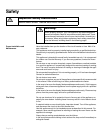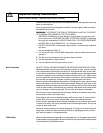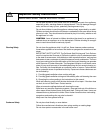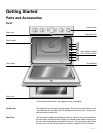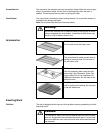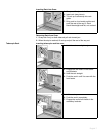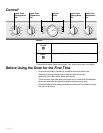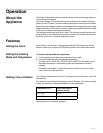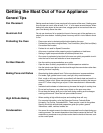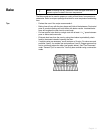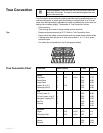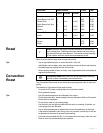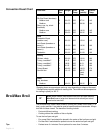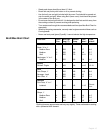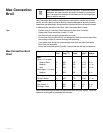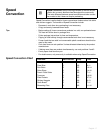
English 10
Getting the Most Out of Your Appliance
General Tips
Pan Placement
Baking results are better if pans are placed in the center of the oven. If baking more
than one pan on a rack, allow at least 1" to 1 ½" of air space around the pan. When
baking four cake layers at the same time, stagger pans on two racks so that one
pan is not directly above the other.
Aluminum Foil
Do not use aluminum foil or protective liners to line any part of the appliance, es-
pecially the oven bottom. Installing these liners may result in risk of electric shock
or fire.
Preheating the Oven
• Place oven racks in desired position before heating the oven.
• Preheat the oven when using the Bake, True Convection, (Max) Broil and (Max)
Convection Broil modes.
• Preheat is not used for Speed Convection.
• Allow oven to preheat while preparing recipe ingredients or food items.
• Setting a higher temperature does not shorten preheat time.
• Once oven is preheated, place food in the oven as quickly as possible to mini-
mize the loss of heat and reduction of oven temperature.
For Best Results
• Use the cooking recommendations as a guide.
• Open the door as briefly as possible to avoid temperature reduction.
• Use the interior oven light to view the food through the oven window rather than
opening the door frequently.
Baking Pans and Dishes
• Glass baking dishes absorb heat. Follow manufacturers' recommendations.
• For tender, light, golden brown crusts, use light, shiny metal bakeware.
• Dark, rough or dull pans (nonstick or anodized) will absorb heat and result in a
browner, crisper crust. Some manufacturers recommend reducing the temper-
ature 25 ºF when using this type of pan. Follow manufacturers' recommenda-
tions.
• Insulated cookie sheets or bakeware may increase the length of cooking time.
• Do not set broil pans or any other heavy object on the open oven door.
• Do not keep the empty broil pan in the oven during cooking as this changes
cooking performance. Store the broil pan outside the oven.
High Altitude Baking
• When cooking at high altitude recipes and cooking times will vary.
For accurate information, write the Extension Service, Colorado State
University, Fort Collins, Colorado 80521. There may be a cost for the guides.
Specify which high altitude food preparation guide you prefer: general
information, cakes, cookies, breads, etc.
Condensation
• It is normal for certain amount of moisture to evaporate from the food during any
cooking process. The amount depends on the moisture content of the food. The
moisture may condense on any surface cooler than the inside of the oven, such
as the control panel.



